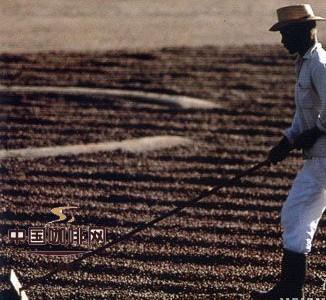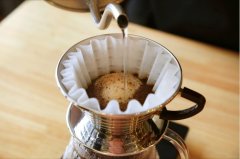Drying is the most traditional method of processing coffee beans

Drying is used for unwashed coffee beans. Wet treatment is used for thoroughly washed or semi-washed coffee beans. Except for the more common use of drying in Brazil and Ethiopia, most Arabica coffee beans are processed by wet treatment. In Indonesia, some Robart coffee beans are processed by wet treatment, but this is not common there.
Drying is the cheapest, simplest and most traditional method of processing coffee beans. When processing, the harvested fruit should be spread on the cement floor, brick floor or straw mat. Ideally, the fruits should be raked flat in the sun and at regular intervals to prevent fermentation. If it rains or the temperature drops, these fruits must be covered to prevent damage.
After about 4 weeks, the water content of each fruit will drop to about 12%, when the fruit is dry. In Brazil, coffee beans at this stage are given a confusing name: coco. At this time, its skin turns dark brown and fragile, and coffee beans can be heard cackling in the shell.
The process requires more technology than it seems. Because coffee beans can be overdried, if this happens, they can easily be damaged at the next stage, when they are shelled. On the other hand, coffee beans that are not sufficiently dried are also vulnerable. The next step is to store the dried fruit in the cellar for a while. During this period, the water in fresh coffee beans continues to evaporate.
Important Notice :
前街咖啡 FrontStreet Coffee has moved to new addredd:
FrontStreet Coffee Address: 315,Donghua East Road,GuangZhou
Tel:020 38364473
- Prev

Main ingredients and processing methods of Coffee
Main ingredients and processing methods of coffee caffeine: it has a particularly strong bitter taste and stimulates the central nervous system, heart and respiratory system. Appropriate amount of caffeine can also reduce muscle fatigue and promote digestive juice secretion. Because it promotes kidney function, it is diuretic and helps the body to expel excess sodium ions from the body. But eating too much can lead to caffeine poisoning. Tannic acid: boil
- Next

Coffee bean treatment method what is the red wine treatment method?
2015 WBC contestant Sasa brought to the world a Colombian coffee bean that has gone through a similar wine-making process. In addition to the novel taste of beans, the red wine treatment used to treat beans also made editors as curious as many coffee lovers. What exactly is the so-called red wine treatment? Before writing this article, the editor flipped through Colombia
Related
- What is the meaning of lactic acid fermentation with coffee bean treatment?
- How to judge the state of foam by sound?
- How does the latte pull out the unicorn pattern? Come to get for a little trick to improve the flower pull!
- Will flower pulling affect the taste of the latte?
- Do you know the history of coffee?
- The difference between honey treatment and sun washing what is raisin honey treatment?
- What kind of milk can a novice use to make coffee foam to keep the foam longer? The correct method and skills of milking tutorial sharing
- Why do washed coffee beans taste sour? Flavor characteristics of washed Coffee
- Introduction to the skill of how to practice the size and height of water injection around the circle of hand-brewed coffee
- How do beginners practice coffee flower drawing from scratch?

